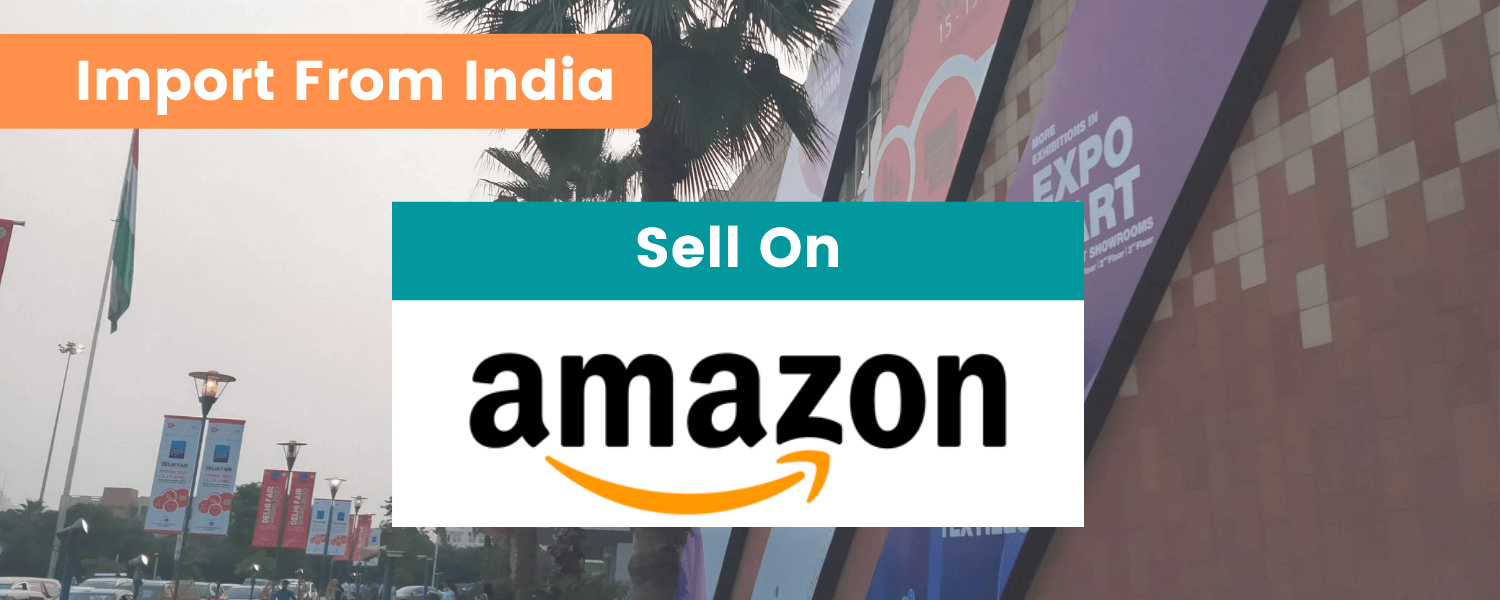Dropshipping vs Amazon Fba
In the rapidly evolving e-commerce sector, the path a product takes from the seller to the consumer plays a pivotal role. Unraveling this complex journey, we encounter two dominant fulfillment strategies: dropshipping and Amazon FBA, each carving a unique pathway in the digital marketplace, particularly appealing to those venturing into the diverse and burgeoning Indian market.
The decision to choose between dropshipping and Amazon FBA entails more than a mere selection; it’s a strategic deliberation affecting every facet of your business framework. This choice gains added weight for those targeting the Indian market, a landscape characterized by a vast consumer demographic, growing internet accessibility, and an increasing predilection for online shopping.
Opting for the most suitable fulfillment model necessitates a deep understanding of their operational variances and how they align with India’s unique market features. Considerations range from product selection and quality control to customer service and return policies, with each model presenting distinct challenges and opportunities.
As we delve further into this analysis, our goal is to furnish you with the knowledge required to maneuver through the dynamic e-commerce environment. Whether your preference leans towards dropshipping’s adaptability or Amazon FBA’s all-encompassing support, grasping these subtleties will enable you to make educated decisions, laying the groundwork for your triumph in India’s vibrant online marketplace.
Understanding Dropshipping and Amazon FBA
The realm of e-commerce brims with potential, and the choice of a fulfillment strategy can significantly influence the success of your business. This section will explore the intricacies of Dropshipping and Amazon FBA, two prevalent fulfillment methods that form the cornerstone of numerous online ventures.
Dropshipping is often portrayed as the entryway to e-commerce entrepreneurship, thanks to its accessible entry points and flexible operation. Essentially, it’s a model that removes the necessity for sellers to maintain stock. Instead, customer purchases are forwarded to a third-party supplier, who then dispatches the product directly to the customer. This approach drastically lowers the risk and investment typically associated with initiating an e-commerce venture.
Conversely, Amazon FBA offers a holistic solution that addresses storage, packing, and shipping on behalf of the seller. Utilizing Amazon’s expansive logistics network, sellers can store their merchandise in Amazon’s fulfillment centers. Upon a sale, Amazon oversees the packaging, shipping, and customer service, streamlining the process to enhance customer satisfaction.

Key Differences Between Dropshipping and Amazon FBA
Venturing into the digital marketplace demands a strategic mindset, particularly when choosing between dropshipping and Amazon FBA. Despite their shared objective of facilitating online sales, these models diverge significantly in their operational approach. Let’s dissect these differences across several key dimensions: inventory management, order fulfillment and shipping logistics, cost structure and profitability, and customer service and returns.
1. Inventory Management
– Dropshipping: This strategy eliminates the need for inventory purchase or storage, drastically reducing overhead expenses. It enables a broader array of product offerings without the risk tied to unsold inventory.
– Amazon FBA: Requires sellers to buy and send their inventory to Amazon’s fulfillment centers in bulk, which involves upfront investment and a deeper understanding of demand forecasting to mitigate overstocking or stock shortages. Though riskier, it affords more control over inventory.
2.Order Fulfillment and Shipping Logistics
– Dropshipping: Depends heavily on supplier reliability, with shipping times varying greatly based on the supplier’s location and efficiency. Sellers have limited control over the fulfillment process, potentially affecting customer satisfaction.
– Amazon FBA: Amazon’s extensive logistics network guarantees swift and reliable shipping, usually within two days for Prime customers. While sellers benefit from Amazon’s efficient process, they must adhere to specific inventory preparation and shipping guidelines.
3.Cost Structure and Profitability
– Dropshipping: Characterized by low initial investments as inventory purchases are not required upfront. However, profit margins may be thinner due to higher costs per item from suppliers and operational expenses primarily tied to the platform and marketing.
– Amazon FBA: Involves higher initial expenses due to inventory purchase and FBA fees, including storage and fulfillment charges. Nevertheless, the potential for greater profit margins exists through bulk purchases and access to Amazon’s extensive customer base.
4.Customer Service and Returns
– Dropshipping: Sellers are responsible for customer service and handling returns, which can complicate the returns process and diminish control over the customer experience.
– Amazon FBA: Amazon oversees customer service and returns, offering a seamless process for consumers. This allows sellers to concentrate more on marketing and selecting products, rather than on operational issues.
Pros and Cons of Dropshipping vs Amazon FBA
The dynamic nature of e-commerce makes choosing the appropriate fulfillment method a critical decision that can significantly impact your business’s path. Both dropshipping and Amazon FBA provide distinct advantages and face unique challenges. Understanding these facets is vital for online sellers, especially those venturing into the Indian market, to make informed choices. Here, we explore the strengths and weaknesses of each model.
Advantages of Dropshipping
- Flexibility and Low Upfront Costs: Dropshipping is renowned for its operational flexibility and minimal barriers to entry, enabling entrepreneurs to launch an e-commerce business without substantial initial investments. This model is particularly attractive for testing different markets or products without committing significant resources.
- Wider Product Selection Opportunities: The absence of inventory requirements allows sellers to offer a vast array of products, facilitating quick adaptation to changing market trends, consumer preferences, and seasonal demands without the risk of excess stock.
- Scalability with Reduced Risk: The dropshipping model scales efficiently as sales grow, without correspondingly increasing the seller’s operational burden or inventory investment. This is crucial for sellers looking to expand their business without significantly increasing operational complexity.
Advantages of Amazon FBA
- Rapid Shipping and Prime Eligibility: Amazon FBA guarantees expedited shipping, often within two days for Prime members, enhancing customer satisfaction and potentially boosting sales. Being eligible for Prime also increases product visibility and competitiveness on Amazon’s platform.
- Access to Amazon’s Extensive Customer Base: Utilizing Amazon FBA allows sellers to reach a broad audience of loyal customers who trust the Amazon brand, potentially leading to increased sales volumes and rapid business expansion.
- Comprehensive Logistics and Customer Service: Amazon FBA manages storage, packing, shipping, customer service, and returns, alleviating the operational burden on sellers. This comprehensive support enables sellers to focus on product selection, marketing, and scaling their operations.
Challenges and Considerations
Dropshipping Challenges:
- Dependence on Supplier Reliability: The success of a dropshipping business heavily relies on the efficiency and reliability of suppliers. Delays, quality issues, or inventory shortages can directly affect customer satisfaction and tarnish the seller’s reputation.
- Intense Competition and Lower Profit Margins: The low barriers to entry in dropshipping lead to fierce competition. Additionally, because suppliers manage inventory and shipping, their costs can result in reduced profit margins for the seller.
- Limited Control Over Customer Experience: Sellers have minimal control over shipping processes and product quality, posing challenges to building a strong brand identity and ensuring consistent customer satisfaction.
Amazon FBA Challenges:
- Elevated Competition on Amazon: The Amazon platform is saturated with competition, as countless sellers compete for the attention of consumers. Standing out in this crowded marketplace demands strategic marketing efforts and a thorough grasp of Amazon’s complex algorithms.
- Fees and Cost Implications: Despite its advantages, Amazon FBA is associated with various fees, including storage, fulfillment, and long-term storage charges, which can diminish profit margins.
- Strict Compliance with Amazon Policies: Sellers must comply with Amazon’s rigorous policies regarding inventory preparation, shipping, and product listings. Failure to adhere can lead to penalties or account suspension.
Navigating the complexities of dropshipping and Amazon FBA reveals that neither fulfillment model offers a universal solution. Each presents distinct benefits and challenges. The decision between dropshipping and Amazon FBA should be based on a strategic alignment with your business goals, financial capabilities, risk tolerance, and desired level of involvement in logistics operations.
Reflecting on insights from Jungle Scout and Dropified.com, it’s clear that the primary distinction between FBA and dropshipping lies in inventory ownership and the timing of supplier shipments. This fundamental choice compels every online seller to consider: Do you prefer the autonomous nature of dropshipping, with its lower initial costs and greater flexibility, or does the structured, customer-focused model of Amazon FBA, promising quicker shipping and Prime eligibility, more closely align with your aspirations for growth?
Deciding on the best course for your business requires careful consideration of your goals and constraints. It involves a strategic assessment of:
- Your financial readiness to invest in inventory and manage the associated costs of storage and fulfillment with Amazon FBA, versus the minimal upfront expenses but potentially narrower margins of dropshipping.
- Your risk appetite, weighing the intense competition on Amazon against the challenges of supplier dependency in dropshipping.
- Your preference for control over the customer experience, balancing the logistical simplicity of Amazon FBA against the adaptability and branding opportunities offered by dropshipping.
As you contemplate these factors, bear in mind that the success of your e-commerce venture is not solely dependent on the chosen fulfillment model but on how seamlessly it integrates with your overall business strategy and objectives. “Each model paves a path to success in the e-commerce world, presenting strategic advantages and operational challenges,” as emphasized in discussions by Jungle Scout and Dropified.com.
In conclusion, achieving e-commerce success is a personal journey, defined by your unique vision, goals, and resources. Whether your preference lies with dropshipping or Amazon FBA, selecting a path that aligns with your business aspirations is crucial for navigating online selling complexities with confidence and strategic acumen. Your fulfillment model is not just a logistical choice; it forms the foundation of your business strategy and reflects your entrepreneurial vision.













